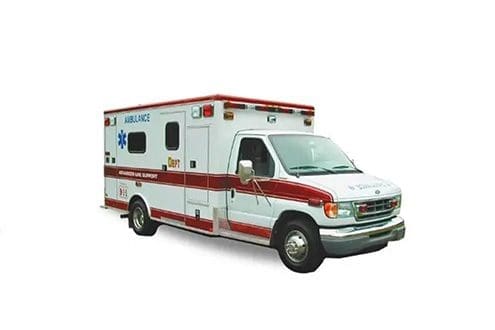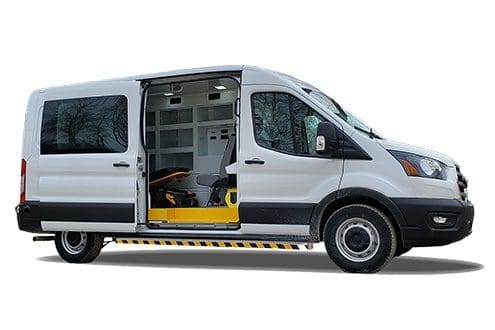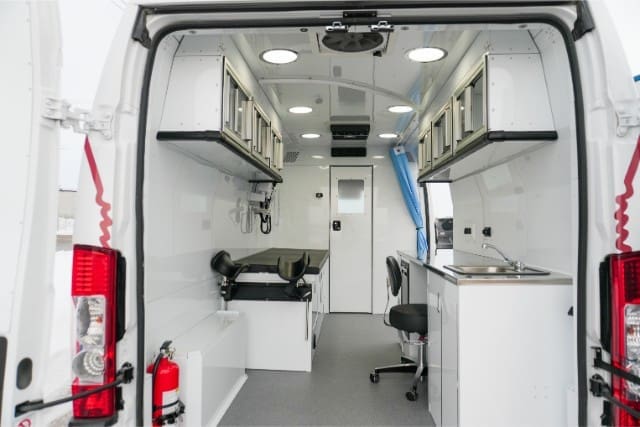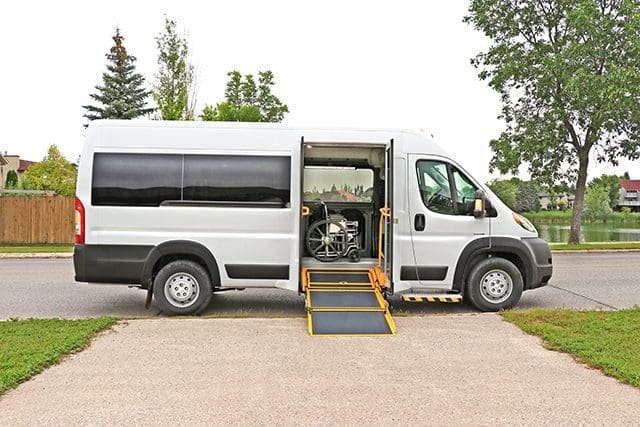You’re looking for a cost-effective, non-emergency patient transfer solution for your organization.
Maybe you’re in charge of safety operations at an industrial site (such as an oil and gas exploration site, a mining site, or an energy resource site) and you need an on-site treatment space for non-urgent medical needs.
Maybe your organization is based in a remote community and you’re looking for an option to treat patients without them having to travel.
Or, maybe you’ve been calling emergency medical services for low-risk medical needs, and you’re wondering if there’s another way to get your patients the help they need.
If any of the above circumstances sound familiar, you may be looking for a vehicle that has all of the convenience of an ambulance, without being an ambulance.
You may be looking for a Mobile Response Van from MoveMobility.
In this article, you’ll learn the differences between a Mobile Response Van and an ambulance to determine which option is right for your organization.
By reading this article, you’ll learn the answers to 5 questions:
- How is each option used?
- Who is each option right for?
- How much does each option cost?
- What license is required to drive each option?
- What regulations/laws do you need to follow when using each option?
Read on to learn the answers to each question, from MoveMobility industry experts.
Mobile Response Van vs. ambulance: what is the difference?
A Mobile Response Van caters to non-emergent patient transfer services. Scenarios where you could use the Mobile Response Van include:
- Patient transfers between hospitals that don’t require life-saving care en route
- Stretcher transport to a medical appointment
- Transport to/from dialysis appointments (sometimes they need to be hooked up to machines that ambulances can take, but it’s not an emergency)
Inside the Mobile Response Van, you’ll find equipment such as stretcher securements, attendant seating, medical equipment, medical supplies, storage, and power.
An ambulance, on the other hand, caters to emergency care. It has life support devices to help patients who need emergency medical intervention in critical moments. An ambulance also has lights and sirens, power requirements, and equipment requirements.
How is each option used?
Ambulance
An ambulance is used for dedicated door-to-door service and rapid mobilization to treat patients in emergency medical situations.
It has life support devices and critical care equipment on board, serving as both emergency treatment and emergency transportation.
Ambulance services improve people’s access to medical care because they run for 24 hours and also because they transfer patients to healthcare facilities from rural or remote areas.

Mobile Response Van
One effective way to use a mobile medical vehicle is as a mobile urgent care clinic.
Urgent care clinics help people in immediate need of medical services while reducing traffic to overrun emergency rooms without calling an ambulance.
It also acts as a mobile medical treatment center on remote job sites to help treat injured workers before a formal emergency response.
The tough truth is that ambulance wait times are getting longer because EMS services are understaffed. A Mobile Response Van can alleviate pressure on EMS services by treating patients who do not need an ambulance, but call one because they don’t have any other option.
Your program can make the Mobile Response Van that other option.

Who is each option right for?
Ambulance
An ambulance is right for EMS services, with legal obligations to have an ambulance.
Mobile Response Van
A Mobile Response Van is right for non-emergent patient transfer services.
It can not be used for unstable patients due to the lack of life support devices and critical care equipment in the van while transferring patients to a hospital.
A Mobile Response Van can not be used as an ambulance.
An ambulance must follow specific rules and regulations to be considered an ambulance, such as having the proper medical equipment, sirens, and lights, and undergoing specific testing.
How much does each option cost?
Ambulance
A base component without the internal components of an ambulance costs about $210,000. With all of an ambulance’s features and internal components, it will cost around $300,000.
Mobile Response Van
A Mobile Response van can cost between $130,000 to $250,000.
Click here to see what makes up the cost of a mobile medical van and why.
What regulations/laws do you need to follow when using each option?
Ambulance
You need to follow specific rules and regulations to provide legal and safe care in an ambulance.
Your ambulance needs:
- Lights and sirens
- Power requirements
- Specific equipment requirements – first aid, suction, O2, AED/defib
Some provinces and health regions have their own rules and regulations. To know what rules and regulations you need to follow, you will need to consult experts in your province and do your own research.
That being said, North America-wide, there are four regulations to follow:
- National Fire Protection Association Standard for Automotive Ambulances
- SAE Mobilus Ambulance Patient Compartment Structural Integrity Test
- Federal Specification for the Star-of-Life Ambulance
- AMD Standardized Test Methods
Mobile Response Van
With a Mobile Response Van, you do not need a specialized license* and you are not required to have specific equipment–again, because a Mobile Response Van is not used for emergency health situations.
*This is true for most provinces in Canada, excluding B.C.
Your next steps for choosing between a Mobile Response Van vs. an ambulance for your organization

You came to this article to learn the differences between a Mobile Response Van and an ambulance, and to figure out which option is better for your organization.
Now, you know how a Mobile Response Van vs. an ambulance compare in terms of how each option is used, who each option is right for, how much each option costs, what license you need to drive both options, and what regulations/laws you need to follow when using each option.
If you’re still not sure if a Mobile Response Van is right for you, talk to a MoveMobility expert today.
Or, check out these related articles for more information:








